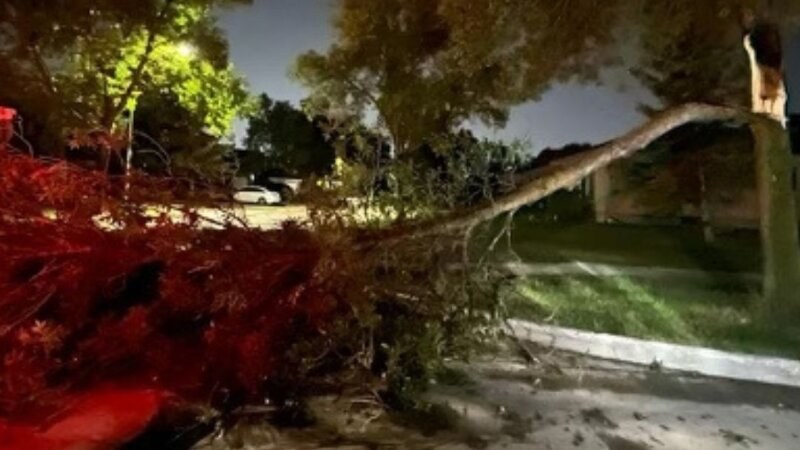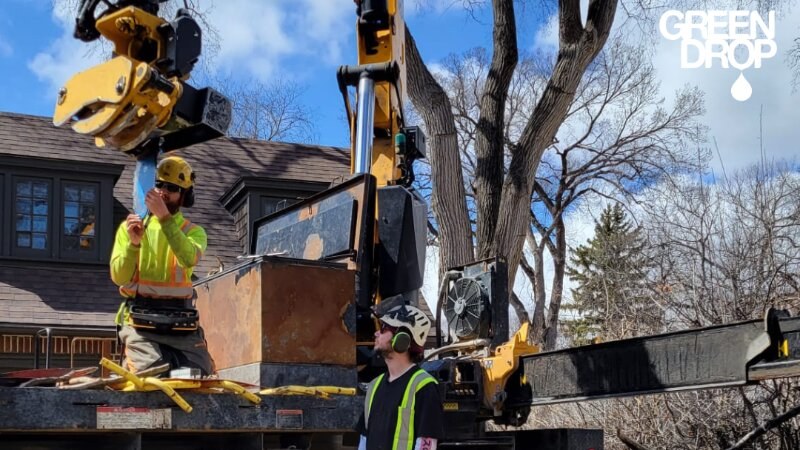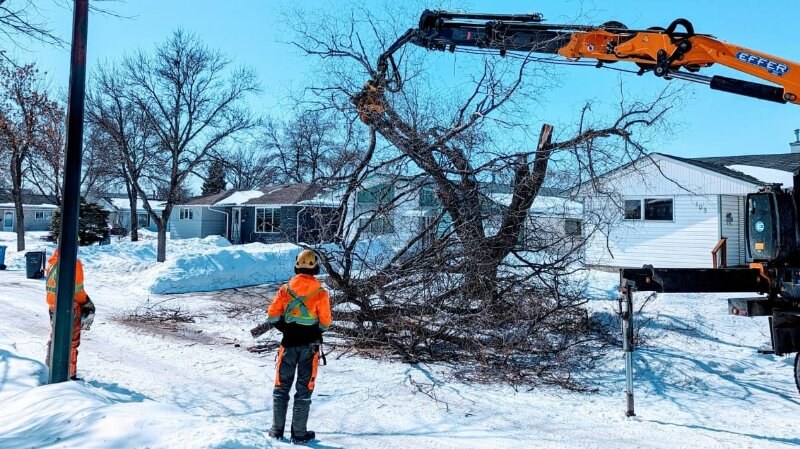8 Reasons You May Need Emergency Tree Services
Reading time: 6 minutesContrary to popular belief, trees require quite a bit of care to keep them pest, disease, and damage-free. Unpredictable weather, fungal infections, nuisance animals, and more can wreak havoc on the internal and external structures of a tree, most of which can’t be repaired by the tree’s natural healing mechanisms.
When this happens, emergency support is needed. Here are 8 signs it’s time to call tree care professionals.

Why Damaged and Diseased Trees Pose an Urgent Hazard
Not all tree problems require a swift response, but some do. This is because certain diseases, pest infestations, and structural damage can weaken the entire tree and make it susceptible to falling. Dead and decaying trees close to houses and other areas where there are people put these individuals at risk of injury or even death if a tree branch or the whole tree falls.
It’s difficult to know if and when a tree will break off or fall, and even harder to take safety measures against it. It’s best to have the tree, or at least its damaged parts, removed right away before it has the chance to cause problems.
8 Signs You Need Emergency Tree Services
Acting quickly when a tree becomes a hazard is crucial for preventing injury and property damage. Call an emergency tree care services provider as soon as possible if:
1. Your Tree Leans to One Side
If your tree is leaning, this is a clear indication that there's a problem within the root system, and it's no longer able to support the weight and structure of the tree. The most frequent culprit is root rot, which occurs when various species of fungi infect and overwhelm a tree's root system, causing even large, thick roots to become soft and pliable.
Once a tree has root rot, it can't be saved, and there's a significant risk of the tree falling over when the ground around the roots becomes saturated.
2. The Tree Is Growing Into Power Lines
Never attempt to trim or cut tree limbs that have grown close to or become entangled with power lines and cables. This dangerous task requires special equipment and safety gear to protect against electrocution and safely cut away tree limbs without coming into contact with any nearby wires.
It's possible that tree trimming is all you need to eliminate the hazard without removing the entire tree. However, this means you may have to revisit the problem in a few years. A qualified tree specialist can assess your circumstances to determine the right solutions for you.
3. The Tree Has Sustained Storm Damage
Due to their instability, trees that have become damaged by storms or fire can be very dangerous to keep around. Even if a tree looks steady enough on the outside, the internal structure may weaken and fall at any moment.
There may be little to no warning before the tree breaks away from the last bit of support that was holding it up, and by then, stopping the damage about to occur isn't possible. Contacting a professional arborist to have your tree removed at the first signs of damage can ensure that no people or property are at risk.
4. You See Exposed Roots
Your tree's root system is its lifeblood. This is how trees get nutrition and hydration; it also supports the trunk, limbs, and leaves. If the roots of your tree are newly exposed, it may no longer be adequately anchored to the ground. This poses a risk of falling.
If the tree is otherwise healthy, issues like soil erosion responsible for exposing the root system may be addressed without removing the tree entirely. However, removal may be a better option if the tree's roots were damaged while exposed to the elements.

5. The Trunk of the Tree Has Been Damaged
A tree that has damage to its trunk is almost certainly unsalvageable. While broken branches can be cut away, so they don't fall off and hit something, a weakened trunk means the breaking point will be closer to the ground. If this happens, the entire crown of the tree may come toppling down onto whatever is underneath. A Certified Arborist can help you assess the tree's stability and recommend appropriate measures such as pruning and removal.
Be sure to regularly inspect your tree trunks for potential damage, especially where nuisance animals may come to hollow out the bark for shelter. Good pest prevention practices are an important part of reducing the appeal of your trees to unwanted creatures.
6. Your Tree Is Showing Signs of Disease
Some tree diseases can be treated, while others are more serious and put the tree and other nearby plants at risk. Some symptoms of critical tree conditions that a certified arborist should check include:
- Pest infestations, particularly if they’re wood-boring insects
- Areas on the trunk where the bark is soft or sunken in
- Oozing cankers or wounds on the trunk of the tree
- Areas of the tree that are swollen or ballooned
- Deep cracks in the bark of the tree
- Bark that is brittle or peels away easily from the tree
- Foliage that turns colours in other seasons besides fall
7. You See Mushrooms at the Base of Your Tree
Mushrooms aren't the first sign of a fungal infection; they're one of the last. Mycelium mostly proliferates underground or below the bark and does so microscopically, so when you see mushrooms pop up, there's already a vast network of spores underneath the top layer of soil or the bark.
While a mushroom or two is nothing to worry about, if you regularly see them underneath your tree, this may be a sign that your tree is suffering from root rot or will soon. Chances are, the tree will need to be removed sooner rather than later, so you’re not just waiting for the soil to become soft enough for the tree to uproot.
Our arborist Mike Leung says, “Different types of fungi have different effects on trees. Some fungi simply feed on dead wood and don't harm the tree's structure, while others can attack the wood, weakening the tree and causing stability problems. The speed at which a tree deteriorates because of fungus depends on several factors, such as the type of fungus and tree, the tree's overall health, and environmental conditions like temperature and moisture. Our expert arborists can assess your trees' condition and suggest the most effective treatment to keep them healthy and safe.”
8. Large Dead Branches Are Waiting to Fall
During the late fall or early winter, look at your trees to see if any large branches are broken or unattached and waiting to fall. They may be tangled up in other branches, making it look like they are attached to the tree, so be thorough when conducting your assessment.
Any branches that aren't attached, damaged, or otherwise compromised should be removed immediately before a storm blows the branches out of the tree.

When to Contact a Tree Removal Company for Emergency Support
If you notice any of the above signs indicating a severe tree problem, it’s important not to wait to reach out for professional assistance. In these cases, DIY tree maintenance could be dangerous or even deadly.
At Green Drop, our certified tree arborists stand by to help you with your emergency tree care service needs. Call our 24/7 hotline at 1-833-928-TREE (8733) for immediate assistance.
You can also visit our website to learn more about tree trimming, tree pruning and how working with a certified arborist can help keep your trees healthy and vibrant every season.
We’re in Calgary, Edmonton, Red Deer, Regina, Saskatoon, and Winnipeg.

